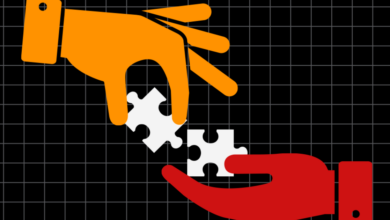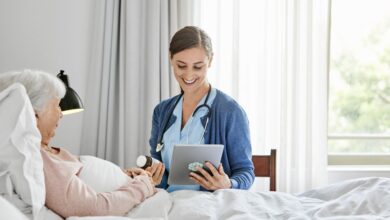Telehealth demonstrates success in treating opioid use disorder


Opioid addiction and overdose-related deaths hit an all-time high in 2022. The opioid crisis has strained health systems, overwhelmed emergency responders and placed a heavy burden on social services.
PROBLEM
Before the advent of telehealth in addiction treatment, people seeking medical help for an opioid use disorder faced a number of challenges that limited their access. Care services. Dr. Robin Arthur Williams, medical director at Ophelia, a telehealth provider that cares for OUD patients, points to the challenges:
-
Geography. Many people with OUD live in rural or remote areas where specialized addiction treatment services are scarce or unavailable. The lack of nearby treatment facilities forces individuals to travel long distances, sometimes across state boundaries, for appropriate care. This poses significant barriers, especially for those who do not have reliable transportation or the financial means to cover travel costs.
-
Limited availability of providers. There is a shortage of health care providers specializing in addiction who are trained and certified to provide evidence-based treatment for OUD. The scarcity of qualified providers has resulted in long wait times for appointments. Delays make it difficult for individuals to receive care in a timely manner, especially during critical times when immediate intervention is needed.
-
Stigma and fear of disclosure. The stigma surrounding substance use disorders, including OUD, has prevented many people from seeking treatment. Fear of judgment, discrimination, or the potential consequences of disclosing their condition often prevents individuals from seeking help. The lack of privacy and security in traditional healthcare settings exacerbates these concerns.
-
Time constraints and inflexible planning. Two-thirds of OUD patients are employed or dependent on childcare, making regular clinic visits, mandatory group therapies, and traditional rehabilitation impossible. In-person treatment often requires individuals to take time off work, school, or other responsibilities to get to appointments. This makes it difficult for individuals with limited flexibility or facing the financial consequences of losing their jobs.
-
Financial sources. The cost of treatment for OUD can be a significant barrier for many individuals, especially those without insurance or with limited financial resources. The costs associated with face-to-face visits, transportation, medications, and counseling sessions can be overwhelming and make treatment difficult for some people.
PROPOSE
Ophelia is a digital provider of drug-assisted therapies (MATs) for OUD, committed to making evidence-based treatment globally accessible. Ophelia is licensed to provide care in 36 states and contracts with Medicaid, Medicare, and commercial insurers to cover 85 million Americans.
“Prior to its 2019 launch, we knew that telehealth had the potential to play an important role in supporting those struggling with OUD by expanding access to the MAT, particularly,” Williams said. especially for those living in rural or disadvantaged areas.
“For context, it’s important to understand that the MAT is considered by the CDC, SAMHSA, AMA, and ASAM to be the gold standard of OUD care,” he added. “Many studies have shown the effectiveness and safety of this treatment, in which reduced overdoses by 76% and emergency room visits by 32%.”
Simply put, the MAT saves lives, he added. But because legacy addiction care is a In a $42 billion business, the use of drugs like buprenorphine, which can be taken in a simple visit with a provider, continues to go unnoticed.
“Traditionally recovering patients take patients in and out, promote ethical abstinence-only programs, and profit from relapse,” says Williams. “The MAT-free treatment plan resulted in a 90% recurrence rate within three months.
“Also, traditional, inpatient rehabilitation requires you to pause your life, leave your environment, and live elsewhere for months, which is not feasible for most,” he continued. everybody. “We believe that providers can prescribe and monitor medications, provide counseling sessions, and adjust treatment plans remotely to support individuals in their recovery journey.”
Providers can also provide convenient follow-up care for patients to monitor progress, address concerns, and provide ongoing support, he added. This helps prevent relapses, enhances adherence and promotes long-term recovery, he says.
“One of the biggest benefits virtual care has for people with OUD is reducing the stigma associated with seeking treatment for OUD,” he notes. “By receiving care in the privacy and comfort of their own home, patients don’t need to worry about being evaluated or disclosing their condition in public.”
MARKET
There are many telemedicine technology and service providers in the medical IT market today. Healthcare IT News published a special report highlighting many of these vendors, with detailed descriptions of their products. Click here to read the special report.
MEET CHALLENGES ONLY
Ophelia’s mission is to make evidence-based treatment available to anyone struggling with OUD, with a special commitment to serving the Medicaid group of people who often overlooked despite disproportionately high OUD rates.
“While other addiction treatment providers rely on referrals from hospitals or primary care providers, Ophelia takes a different approach, recruiting patients online,” explains Williams. online and create a platform to mobilize underutilized clinicians”. “This is important to reach the ‘invisible 80%’ of Americans with OUD who don’t enter the health care system until a dangerous complication occurs.
“As such, Ophelia has created a widely successful, digital native clinical model. He continued: “By combining team care with collaborative clinician training and clinical software, Ophelia provides the opportunity to treat more than 50,000 licensed MAT clinicians who are Previously there was no way to treat patients due to lack of infrastructure.”
Ophelia treated its first patient in early 2020 and has since rapidly been adopted by both patients and clinicians. Today, it is licensed to provide care in 36 states and has national and regional policies that cover 85 million lives, including all-inclusive rates on Medicaid, Medicare, and Medicaid. commercial population.
RESULT
Ophelia shared recently Findings from its poster presentation at the annual ASAM Conference suggest that home stimulation of buprenorphine guided by telehealth is both feasible and well tolerated.
Williams reports: “Over 90% of patients returned in one or more follow-up sessions and more than 80% met HEDIS participation criteria, including attending two or more visits within 34 days of receive”.
“The data also suggest that patients on fentanyl can be successfully stimulated with buprenorphine using an emphasizing regimen: low initial buprenorphine dose, rapid titration to target dose, active use of comfortable drugs and monitor closely during buprenorphine dose adjustments.
“Another Ophelia research, published in American Journal of Drug and Alcohol Abusedemonstrated that opioid users who received MAT via telehealth had high retention rates,” he continued. “We found that 56.4% of Ophelia’s patients continued treatment for six months and 48, 3% maintenance for a year – that retention rate is significantly higher than traditional direct care.”
Research also reveals that telehealth patient retention rates are higher than The group of patients who encountered many states directly had been studied before (using the same definition of visit-based retention). Although it was hypothesized that retention rates would be lower in racial/ethnic minority patients and rural patients, the study found no significant association between gender, race, and ethnicity. race/ethnicity, state or rural area with maintenance treatment.
“These groundbreaking results point to the long-term promise of a telehealth-based drug-assisted treatment for OUDs,” says Williams. “It can also have an incredible impact on patients who often have difficulty accessing care.
“These study results take it one step further in proving what we already know: telehealth-based drug-assisted treatment for opioid use disorder is highly effective in reducing opioid use,” he said. reduce overdose and prevent relapse”.
Follow Bill’s HIT coverage on LinkedIn: Bill Siwicki
Email him: [email protected]
Healthcare IT News is a publication of HIMSS Media.




